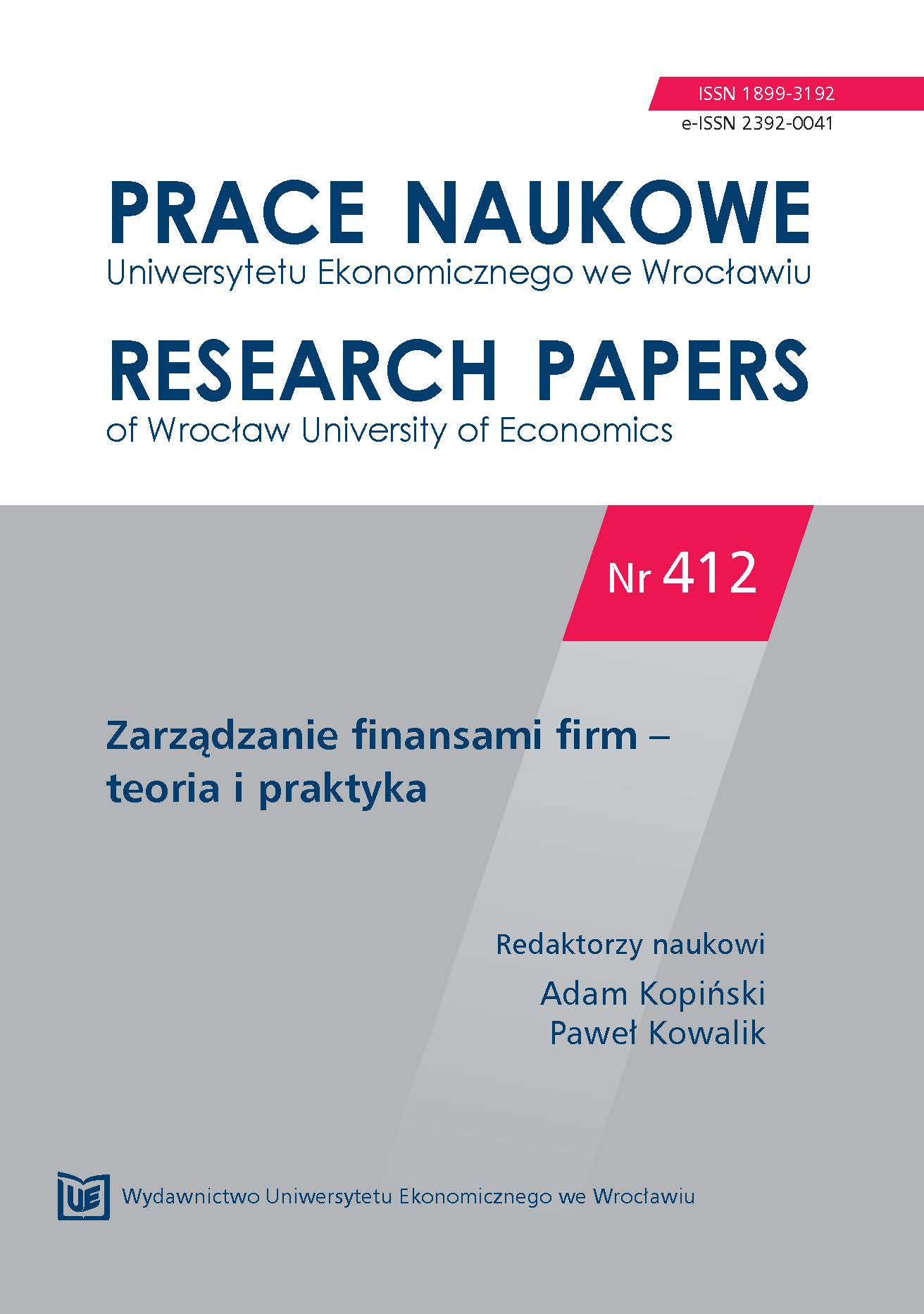Willingness to disclose information versus investors’ expectations in companies listed on the Warsaw Stock Exchange
Willingness to disclose information versus investors’ expectations in companies listed on the Warsaw Stock Exchange
Author(s): Magdalena Mikołajek-GocejnaSubject(s): Economy
Published by: Wydawnictwo Uniwersytetu Ekonomicznego we Wrocławiu
Keywords: information asymmetry; asymmetry index of investor relation; cost of equity (CE); future EVA growth (FGV); threshold market value added (threshold MVA)
Summary/Abstract: The purpose of the work is to establish a relationship between the information asymmetry and the level of enterprise’s willingness to disclose information and between the asymmetry index of investor relation (AIR) and the metrics describing the value of investors’ expectations in companies listed on the Warsaw Stock Exchange. Publicly traded companies have a major influence over the indices of information asymmetry in relations to external shareholders. For this reason, for the purpose of this study an asymmetry index of investor relations (AIR) has been constructed. This metric represents a company’s ability to convey information about its operations. AIR was based solely on the guidelines of value reporting as proposed in the IC Rating™ Model [Jacobsen et al. 2005]. Adopting the IC Rating Model as a basis for the AIR allowed to encompass all the information voluntarily disclosed by companies to the market, and not only the disclosures required by legal regulations. As the metrics describing the value of investors’ expectations were used: cost of equity (CE), future EVA growth (FGV) and threshold market value added (threshold MVA). The study has been based on stock market data, financial reports, and an analysis of the information published on the websites of companies listed on the Warsaw Stock Exchange within the continuous trading system, and for which all data necessary for the relevant calculations were available. As it has been revealed there exist statistically significant correlations between asymmetry indicators and investors’ expectations. Companies with a high willingness to disclose information are more capable of creating investors’ expectations. There are also statistically significant correlations between the indicators that represent the level of information asymmetry in investor relations (AIR) and companies’ results.
Journal: Prace Naukowe Uniwersytetu Ekonomicznego we Wrocławiu
- Issue Year: 2015
- Issue No: 412
- Page Range: 257-272
- Page Count: 16
- Language: English

